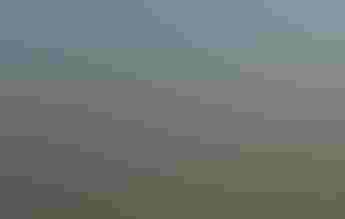
More than 800 North American birds at your fingertips—all for free.
One common birdseed ingredient is conspicuously capitalized and tagged with the registered trademark symbol: Nyjer, or Guizotia abyssinica.
What gives?
Nyjer, a small, thin black seed highly popular with most finch species, first arrived at U.S. feeders in the early 1960s as ‚Äúniger‚ÄĚ‚ÄĒ pronounced like the nation of Nigeria‚ÄĒ a foreign wonder seed that was 30 to 40 percent oil (on par with black oil sunflower seeds).Nyjer has often been misleadingly sold as thistle to associate it with the North American plant that finches frequent, so to avoid any confusion, the Wild Bird Feeding Institute trademarked the seed as Nyjer in 1998.
Today it is the only major birdseed ingredient primarily imported from outside North America‚ÄĒmainly from India and Ethiopia, where it‚Äôs grown for oil and medicinal uses‚ÄĒand it risks carrying a noxious weed known as dodder. In the 1980s, dodder contamination prompted the U.S. Department of Agriculture to mandate heat sterilization for imported seed, and in the 1990s the rules became even stricter after infestations briefly halted the import of Nyjer.
Currently, there are only four facilities in the world licensed to do the heat sterilization necessary to bring the seed to the United States: two in India that treat seeds before they’re shipped and two in the mid-Atlantic that treat them when they arrive.
Given all this hassle‚ÄĒand the premium price importing demands‚ÄĒit's unsurprising that there have been forays into growing Nyjer domestically. In the late 1970s, a test crop at the University of Minnesota led scientists to conclude the plant needed to be tried further south, where the growing season is longer. Purdue University attempted that in 2001, sowing Nyjer plots in Indiana, Illinois, and Missouri. The plants grew well, but pest problems and Nyjer's difficulty to mechanically harvest meant yields were too low to be commercially viable. (Overseas, the seed is harvested manually.) Since then, attempts to grow the crop have stalled, which might have just as much to do with the fact that, unlike in India and Ethiopia, the only current U.S. market for Nyjer is birdseed.
Meanwhile, production in India has recently been declining as farmers there face their own issues with dodder and traditional uses of the seed wane. In Ethiopia, where there is an appetite for improving the quality of the crop, a study from the government agricultural agency identified challenges to increasing production and suggested several areas of research that could improve yields‚ÄĒall of which would take time to come to fruition. So, considering the potential problems for supply abroad, it's possible that there will be further explorations into growing Nyjer in the American heartland. For now, though, one thing is for certain: Birds‚ÄĒand consumers‚ÄĒlove the stuff, so its presence at feeders is firmly entrenched.
This piece originally ran in the Spring 2023 issue as "What's the Deal With Nyjer?" To receive our print magazine, become a member by .